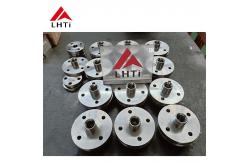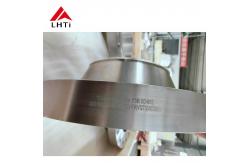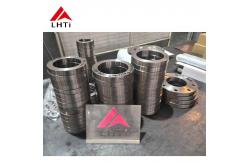Titanium Lap Joint Flanges The Ultimate Solution for Aerospace Engineering Challenges
|
|
High-Performance Titanium Lap Joint Flanges for Aerospace ApplicationsIntroductionThe aerospace industry is characterized by its stringent demands for materials that offer exceptional strength, lightweight properties, and resistance to extreme environmental conditions. In this context, titanium has emerged as a preferred material for various components, including flanges. Among these, high-performance titanium lap joint flanges play a crucial role in ensuring the integrity and safety of aerospace systems. This article explores the characteristics, advantages, applications, and future prospects of titanium lap joint flanges in aerospace engineering. Understanding Titanium Lap Joint FlangesTitanium lap joint flanges are designed to facilitate easy assembly and disassembly of piping systems, making them ideal for applications requiring frequent maintenance or modification. These flanges consist of two components: the lap joint flange itself and a stub end that connects to the piping. This design allows for flexibility in alignment and simplifies the installation process. Moreover, the use of titanium in these flanges offers several advantages, including high corrosion resistance, lightweight properties, and excellent mechanical performance at elevated temperatures. The lap joint flange design is particularly advantageous in aerospace applications where space is often constrained, and weight reduction is critical. By providing a slip-on feature, these flanges allow for easier adjustments during installation, ensuring that components align correctly without requiring complex machining or welding processes. This ease of use is essential in the aerospace sector, where precision and efficiency are paramount. Advantages of Titanium in Aerospace FlangesTitanium is renowned for its unique combination of properties that make it suitable for aerospace applications. One of the most significant advantages of titanium lap joint flanges is their exceptional strength-to-weight ratio. This characteristic is particularly beneficial in the aerospace industry, where reducing weight can lead to improved fuel efficiency and enhanced performance. Titanium alloys, such as Ti-6Al-4V, are commonly used in these flanges due to their ability to withstand high stress while maintaining a lower weight compared to traditional materials like steel. Another important advantage of titanium is its outstanding corrosion resistance. Aerospace components are often exposed to harsh environments, including high humidity, extreme temperatures, and chemical exposure. Titanium’s natural oxide layer provides excellent protection against corrosion, ensuring the longevity and reliability of flanged connections in various aerospace systems. This resistance is crucial in preventing failures that could jeopardize the safety and performance of aircraft. Additionally, titanium exhibits excellent fatigue resistance, which is vital in aerospace applications where components are subjected to cyclic loading. The ability to withstand repeated stress without failure enhances the overall durability of titanium lap joint flanges, making them a reliable choice for critical aerospace systems. This durability, combined with the material's lightweight nature, underscores titanium's suitability for high-performance aerospace applications. Applications in Aerospace SystemsTitanium lap joint flanges are utilized in various aerospace applications, from aircraft structures to engine components. In the aviation industry, these flanges are commonly used in fuel systems, hydraulic systems, and pneumatic systems, where reliable connections are essential for operational safety. The lightweight nature of titanium flanges contributes to overall weight reduction, which is a primary goal in aircraft design to improve fuel efficiency. In addition to fuel and hydraulic systems, titanium lap joint flanges are also employed in exhaust systems and environmental control systems. These applications require materials that can withstand high temperatures and resist corrosion due to exposure to exhaust gases and chemicals. Titanium's ability to maintain strength and integrity under such conditions makes it an ideal choice for these demanding environments. Furthermore, as the aerospace industry continues to innovate, the use of titanium lap joint flanges is expanding into emerging technologies such as electric propulsion and advanced composite structures. As aircraft designs evolve to include more complex systems and lightweight materials, the demand for high-performance components like titanium flanges will likely increase, driving further research and development in this area. Manufacturing Processes for Titanium FlangesThe manufacturing of titanium lap joint flanges involves several specialized processes to ensure the components meet stringent aerospace standards. One of the primary methods used is forging, which provides excellent mechanical properties through the consolidation of titanium ingots. This process allows manufacturers to produce flanges with enhanced strength and fatigue resistance, crucial for high-stress applications. Machining is another critical process in the production of titanium lap joint flanges. Due to titanium's work-hardening characteristics, machining requires careful consideration of cutting tools and parameters to achieve optimal results. Advanced techniques, such as computer numerical control (CNC) machining, are often employed to ensure precision and consistency in flange dimensions, which is essential for proper fit and function in aerospace applications. Surface treatment processes also play a significant role in enhancing the performance of titanium lap joint flanges. Treatments such as anodizing or applying protective coatings can further improve corrosion resistance and wear properties. These surface enhancements are particularly important in aerospace environments, where components are subjected to various environmental challenges. The combination of robust manufacturing processes and surface treatments ensures that titanium lap joint flanges can withstand the rigors of aerospace operations. Challenges in Using Titanium FlangesDespite the numerous advantages of titanium lap joint flanges, there are challenges associated with their use in aerospace applications. One of the primary challenges is the higher cost of titanium compared to traditional materials like steel. The extraction and processing of titanium are more energy-intensive, leading to elevated material costs. This can impact the overall budget of aerospace projects, particularly in larger-scale applications where numerous flanges are required. Additionally, the machining and fabrication of titanium can be more complex than that of other metals. The work-hardening nature of titanium necessitates specialized tools and techniques to achieve the desired precision and surface finish. This complexity can lead to longer lead times and increased production costs, which may deter some manufacturers from opting for titanium components. Moreover, while titanium exhibits excellent corrosion resistance, it can be susceptible to certain forms of corrosion, such as galvanic corrosion when in contact with dissimilar metals. Proper material selection and design considerations must be made to mitigate these risks. Ensuring compatibility with other materials in the assembly is crucial to maintaining the integrity and performance of titanium lap joint flanges in aerospace systems. Future Trends in Titanium Flanges for AerospaceThe future of titanium lap joint flanges in the aerospace industry appears promising, driven by ongoing advancements in material science and engineering. As the demand for lightweight and high-performance components continues to grow, manufacturers are likely to invest in research and development to enhance the properties of titanium alloys. Innovations in alloy compositions may lead to even stronger and more corrosion-resistant materials, further expanding the applications of titanium flanges. Additive manufacturing, or 3D printing, is another trend that could significantly impact the production of titanium flanges. This technology allows for the creation of complex geometries that are difficult or impossible to achieve with traditional manufacturing methods. By leveraging additive manufacturing, manufacturers can optimize designs for weight reduction and performance while also minimizing material waste. This shift towards more sustainable production methods aligns with the aerospace industry's growing focus on environmental responsibility. Additionally, the ongoing exploration of hybrid materials and composites may open new avenues for the integration of titanium flanges in aerospace systems. By combining titanium with other materials, engineers can create components that capitalize on the strengths of each material, leading to even greater performance enhancements. As these trends continue to evolve, the role of titanium lap joint flanges in aerospace applications is likely to expand, solidifying their importance in the industry's future. ConclusionHigh-performance titanium lap joint flanges play a vital role in the aerospace industry, providing the strength, lightweight properties, and corrosion resistance required for demanding applications. Their unique design facilitates ease of installation and maintenance, making them an essential component in various aerospace systems. While challenges exist, such as higher costs and manufacturing complexities, the advantages of titanium continue to drive its adoption in the aerospace sector. As technology advances and new manufacturing methods emerge, the potential for titanium lap joint flanges is expected to grow. Ongoing research and development will likely lead to enhanced materials and production techniques, further solidifying titanium's position as a leading material in aerospace applications. With their proven performance and reliability, titanium lap joint flanges are set to remain a crucial component in the evolution of aerospace engineering, contributing to safer and more efficient aircraft designs.
4. Specifications for ASME B16.5 Class 150 Titanium Blind Flange
Advantages of ASME B16.5 Titanium Blind FlangesASME B16.5 titanium blind flanges provide key benefits tailored for industrial applications:
|
||||||||||||||||||||||||||||||||||||||||||||||||||||||||||||||||||||||||||||||||||||||||||||||||||||||||||||||||||||||||||||||||||||||||||||||||||||||||||||||||||||||||||||||||||||||||||||||||||||||||||||||||||||||||||||||||||||||||||||||||||||||
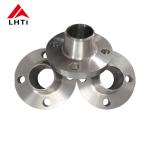
|
Weld Neck Flanges ASME B16.5 RF MFM TG RJ FF Gr1 Gr2 Gr5 Baoji Customized |
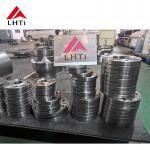
|
Titanium Flanges Essential Components in the World of Biomedical Engineering | Titanium Flanges Connecting Bone |
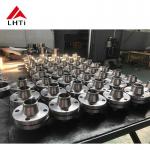
|
Designing Titanium Flanges for High-Stress Oil and Gas Applications |
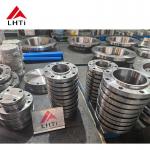
|
Titanium Flanges | Enhancing System Reliability with Titanium Flanges in High-Temperature Applications |
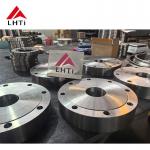
|
hexagon flange | flat flange | Corrosion-Resistant Titanium Flanges Enhancing Longevity in Chemical Processing |
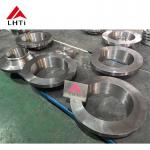
|
ASME B16.5 and Titanium Flanges Types Design and Advantages According to the Standard |

